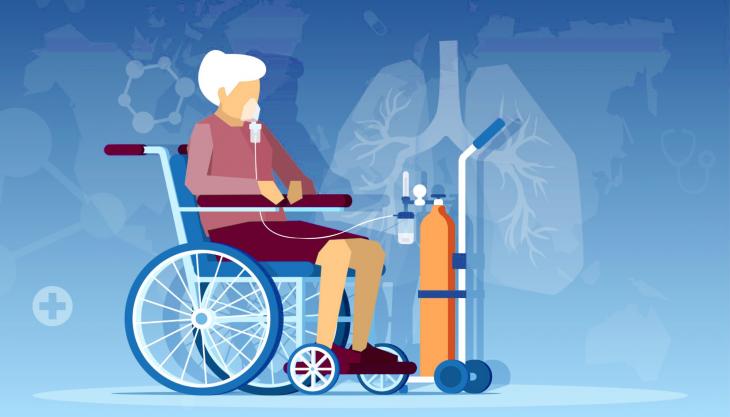Forgiving Medical Debt After Debt Is Sent to Collections Has Fewer Benefits (study)
Submitted by Law Office Blogger on Wed, 06/05/2024 - 1:52pm

A new study by researchers who partnered with RIP Medical Debt, a non-profit that buys and forgives medical debt, found “disappointing” results when people’s bills were purchased and forgiven, with little impact on people’s credit scores and willingness to go to the doctor.
“Our hope was that this would be a cost effective intervention,” said Raymond Kluender, lead author on the National Bureau of Economic Research (NBER) report which partnered with RIP Medical Debt, and an assistant professor of business administration at Harvard Business School.
“We find no real benefits on people’s household finances or their mental health or utilization of healthcare in our study,” Kluender said.
However, he added, he doesn’t “think any of the authors on the project would not say medical debt is not a huge issue”. Instead, Kluender said, “Our interpretation is you have to intervene upstream,” which essentially means it might be more effective to provide people with financial assistance or universal, affordable healthcare – the sort that might prevent bills from accumulating – rather than forgive one bill at a time.
“What we do doesn’t solve the problem, but it removes some of the burden,” said Allison Sesso, president and CEO of RIP Medical Debt. Government policy change – one that provides universal healthcare – is “a better answer” but “we’re not holding our breath for that to happen”.
The findings are likely to disappoint legislative leaders. At least 15 states and local jurisdictions have worked with RIP Medical Debt to relieve debts for their constituents. Many, such as Arizona and Connecticut, used millions in federal pandemic relief aid to forgive debt.
“If you’re intervening only after the debt has been sent to collections or after the hospital has been collecting on it for a year, there’s very little benefit,” said Kluender.
The results contrast with surveys done by RIP Medical Debt, which found medical debt dramatically impacted people’s mental wellbeing and self-worth, and with the positive effects of “upstream” relief from hospital financial assistance programs.
Although more than 90% of US adults have health insurance, individual medical debt has become an important way US healthcare is financed, particularly in the last decade.
Most Americans make monthly payments toward insurance (premiums) and large upfront payments (deductibles) before insurance kicks in. For the average worker with only one person on a plan, the average annual deductible in 2023 was more than $1,700.
Unexpected medical bills can accumulate quickly when insurance denies claims, when small upfront payments (co-pays) are required regularly, or when people use doctors or services not covered by their health insurance (out-of-network).
All of those cash payments are collected by providers. When people can’t pay those bills, they become debt, and those providers send bills to collectors. That’s how medical debt became the most common form of debt in collections in 2021 – representing 58% of all debt on credit reports.
Those bills are important health indicators for several reasons. First, people will avoid the doctor if they have large upfront payments. There is also evidence to show people cut back on food, medicine, clothes and other household expenses when they have medical debt. Out-of-pocket expenses can push some Americans to delay having kids. On the population level, places where people have more medical debt also tend to have worse overall health outcomes.
Seeking to study the effects of debt forgiveness, researchers conducted a study with RIP Medical Debt that sorted more than 83,000 people with $169m in medical debt into three camps.
One group had debt purchased directly from a for-profit hospital with operations across eight states in the mountain west and south and forgiven. That debt was younger and more expensive, at 5.5 cents for every $1.00 of face value. Another group had debt purchased directly from a debt collection company. This debt was generally older and was less expensive – RIP was able to buy this debt for less than one penny for every $1.00 of face value. A third group was allowed to go through collections. Researchers then surveyed those people about a year later for impacts on mental, physical and financial health changes.
Researchers found that medical debt forgiveness did not dramatically affect people’s overall financial health, but that it did increase credit availability for a small subset of people who otherwise had clean credit reports. They also found debt relief slightly reduces payment of other medical bills (by $14 or about 7.2% on average), researchers believe because people may have then expected relief. They also found debt relief did not positively impact mental health.
However, the research did appear to show a widespread positive effect from a change in the credit landscape. In the middle of the experiment, the nation’s three large reporting agencies voluntarily stopped reporting most medical debt.
“I think the research is well done there,” said Breno Braga, an economist at the Urban Institute. “The results are at first counterintuitive, but after you read the results they make sense.”
Debt forgiveness is, “a very specific program that has been done to deal with medical debt”, and one that authors show “is not as positive as one would imagine”. But, Braga added, “I don’t think you can conclude from there that medical debt is not important.”